|
Some form of dulcimer can
be found in most parts of the world and early music scholars such
as Anthony Baines
thought that the idea of a beaten psaltery or dulcimer, may have come from
Persia.
(Musical Instruments
Through the Ages' - Pelican 1961)
More recently researchers
like Paul M. Gifford have argue that the dulcimer first appeared from western
Europe during
the early fifteenth
century, prior to the earliest Islamic evidence of a struck dulcimer and
concluded that 'Therefore we must accept the evidence that the dulcimer
arose in Western Europe independently.'
(The Hammered Dulcimer, A
History - Scarecrow Press 2001)
In each country a struck
dulcimer has its
own name and below are some of them.
|
North America |
 a.
a. |
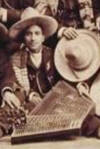 b.
b. |
|
| |
U.S.A -
Hammer dulcimer
|
Mexico -
Salterio
|
|
|
Scandinavia |
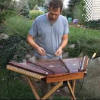 c.
c. |
 d.
d. |
 e.
e. |
| |
Denmark -
Hakkebaet
|
Norway -
Hakkebrett
|
Sweden - Hackbrade
|
|
Western Europe |
 f.
f. |
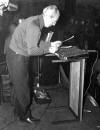 g.
g. |
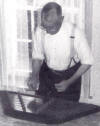 h.
h. |
| |
Switzerland
-
Hackbrett |
Germany - Hackbrett |
Austria - Hackbrett |
| |
England - Dulcimer
|
Ireland -
Dulcimer
|
Scotland - Dulcimer
|
| |
Spain - Salterio |
Portugal - Salterio |
Italy - Salterio |
|
Eastern Europe |
 i.
i. |
 j.
j. |
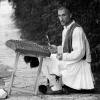 k.
k. |
| |
Latvia - Cimbole |
Lithuania -
Cimbolai |
Belarus - Cymbaly
|
| |
Poland - Cymbaly |
Russia (Klintsy) -
Tsymbali |
Ukraine (Ivano-Frankivsk)
- Tsymbaly |
| |
Slovakia - Cimbal |
Hungary - Cimbalom
or Citera
|
Slovenia - Cimbale
or Oprekelj |
| |
Croatia - Cimbal or
Cimbul |
Romania - Tambal
|
Ukraine (Crimea) -
Santyr |
|
|
Bulgaria - Tsimbal |
Greece - Santouri
|
|
|
Middle East |
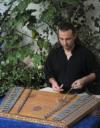 l.
l. |
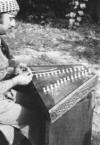 m.
m. |
 n.
n. |
| |
Turkey - Santur
|
Armenia - Santir |
Israel - Tsimbl,
Cymbal, Hakbreydl |
| |
Iraq - Santour
|
Iran - Santour |
|
|
East
|
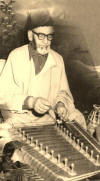 o.
o. |
 p.
p. |
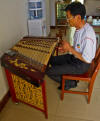 q.
q. |
| |
Uzbekistan - Chang
|
India (Jammu) -
Santoor
|
Mongolia - Yoochin |
| |
China (Xinjiang
Province) - Chang |
China (Beijing) -
Yangqin
|
Korea - Yanggeum |
| |
Taiwan - Yangqin |
Burma - Don-min |
Thailand - Khim or
butterfly harp |
| |
Vietnam - đŕn tam
thập lục |
Cambodia - Khum |
|
|
Photos
|
a. American
hammered dulcimer player |
b. Mexican Salterio player |
|
c. Swedish Hackbrade played by Ted Yoder |
d. A highly
decorated Hackbrett from the Tyrol |
e. Swiss Hackbrett player Nicolas Senn |
|
f. Dulcimer
player Bill Fell of Birmingham, England |
g. Scottish
dulcimer player Jimmy Cooper |
h. Dulcimer
player John Rae from Northern Ireland |
|
i. A Belarus
Cymbaly player |
j. Hungarian
Cimbalom virtuoso Viktória Herencsár |
k. A Greek Santouri player |
|
l. Juan Manuel
Rubio playing a Turkish Santur |
m. A Santour
player from Iraq |
n. Sina Bathaie
playing a Persian Santour |
|
p. Ustaad
Tibetbaqal, Indian Santoor player
|
p. A highly
decorated Uzbekistan Chang |
q. Chinese Yanqin player Zhou Gege |
Click on the photo thumbnails to
see larger images.
Below is a map which
indicates where dulcimers are found around the world.
Click on a red dulcimer shaped pin
and a description of that county's dulcimer will appear, along with links to
videos of the instrument being played. N.B. the orange triangular pins relate to
the mountain dulcimer family.
|